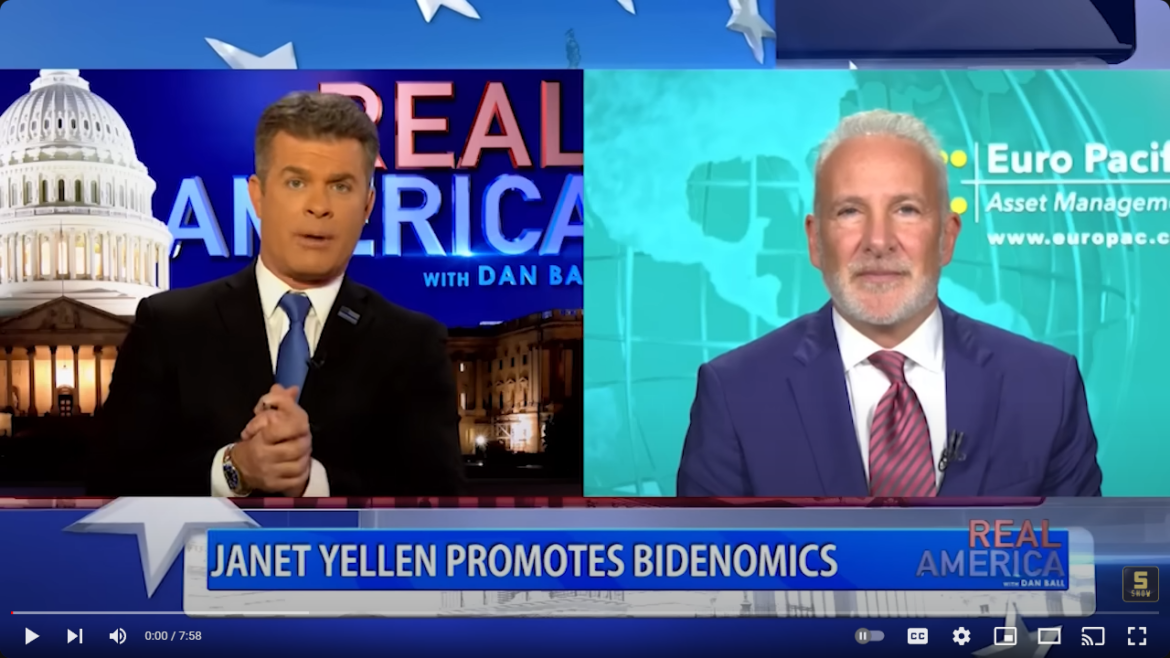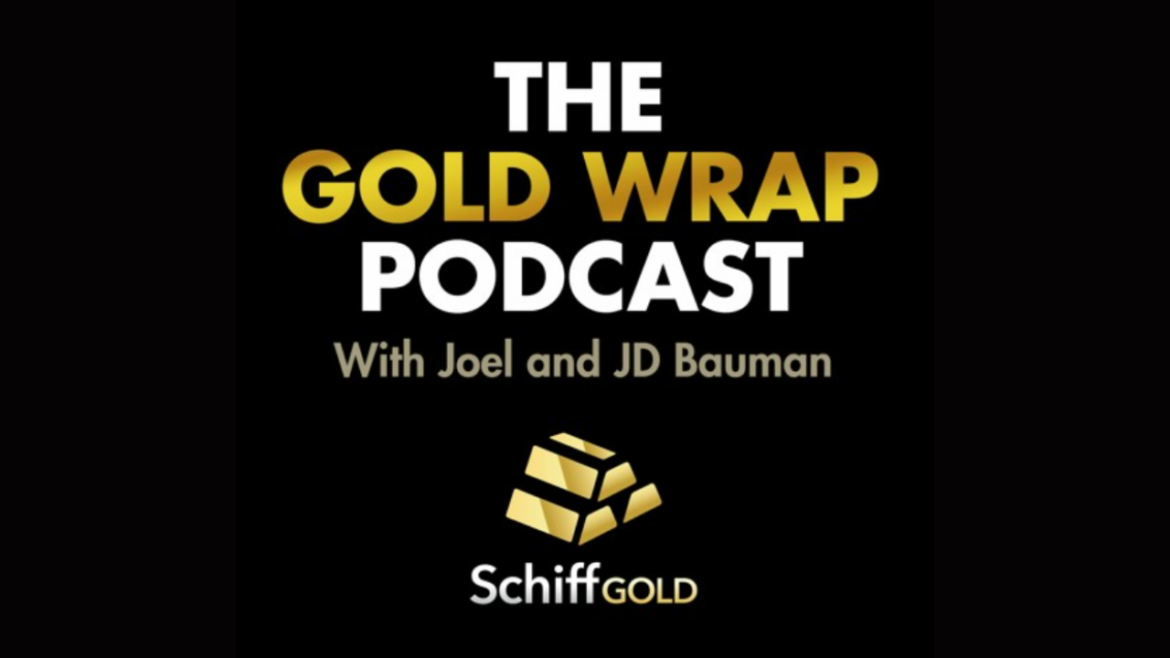Precious metals are apparently waking up. And here is where you can find the best deals.
Site:
Precious metals news
 The Road to $3,000 Gold: Citi Analysts Eye Central Bank Moves and Global Economic Trends
The Road to $3,000 Gold: Citi Analysts Eye Central Bank Moves and Global Economic TrendsFeb 20, 2024 - 06:26:30 PST
Citi analysts predict a potential surge in gold prices to $3,000 per ounce and oil to $100 per barrel in the next 12 to 18 months, driven by three key catalysts: a significant increase in central bank purchases of gold, the onset of stagflation, or a deep global recession. Gold's price, already at $2,016, could rise by approximately 50% due to these factors. The analysts highlight "de-dollarization" in emerging market central banks as a primary catalyst, which could lead to a crisis of confidence in the U.S. dollar and significantly boost gold purchases. This shift could challenge jewelry consumption as the dominant force in gold demand, marking a significant change in the market dynamics of gold.
In a recent interview, Peter Schiff was featured on Real America with Dan Ball.
On Super Bowl Sunday, President Biden took to X (formerly Twitter) to skewer consumer brands for “shrinkflation,” a phenomenon where product vendors reduce package sizes without proportionally reducing price, in what essentially amounts to a per unit cost increase for consumers. The video explicitly calls out popular snack brands such as Breyers, Gatorade, and Tostitos— all food products that are likely on the top of consumers’ minds when thinking of inflation.
Can America hope to climb past its mountain of $34 trillion of federal debt? With the staggering weight of unfunded liabilities in vital entitlement programs like Social Security and Medicare reaching a staggering $212 trillion, any strategy for repayment is met with formidable obstacles. Our guest contributor examines these challenges and arrives at a sobering verdict: the magnitude of the debt renders the prospect of repayment virtually impossible. While clearing the debt may be beyond reach, the US can still take decisive action to rein in spending and prevent further exacerbation of its dire financial predicament.
 METALS & ENERGY MARKET UPDATE FEB 18th: Hyper-inflated Stock Market Continues While Energy & Commodities Remain O...
METALS & ENERGY MARKET UPDATE FEB 18th: Hyper-inflated Stock Market Continues While Energy & Commodities Remain O...February 18, 2024
Investors continue to ignore energy, metals, and the mining industry as the U.S. Stock Market becomes more concentrated with the largest stocks. However, this will rotate back the other way as investors realize they must protect their wealth as we hit the ENERGY CLIFF...
 Credit Markets Show Unwavering Strength Amid Rising US Inflation Concerns
Credit Markets Show Unwavering Strength Amid Rising US Inflation ConcernsFeb 16, 2024 - 12:19:05 PST
Despite unexpectedly high U.S. inflation rates challenging the outlook for imminent Federal Reserve rate cuts, the credit markets remain robust, buoyed by a substantial influx of investment. This surge of capital into the credit market has effectively cushioned investors against potential downturns, including the diminishing likelihood of central bank rate reductions this year. On Tuesday, despite the inflation surprise, risk premiums on both high-grade and junk bonds dropped, and a key measure of default insurance barely ticked higher than the previous day's levels. This resilience is largely attributed to the continuous flow of funds into credit investments, leaving managers with ample cash to deploy.
Feb 16, 2024 - 12:12:21 PST
The Federal Reserve Board has unveiled the hypothetical scenarios for its annual stress test, a critical evaluation aimed at ensuring the resilience of large banks in the face of severe recessions. This year, for the first time, the Board has introduced four additional hypothetical elements in its "exploratory analysis" to assess various risk factors, although these will not impact bank capital requirements. The stress test will scrutinize the ability of 32 banks to maintain lending operations during a drastic global recession scenario, which includes significant stress in commercial and residential real estate markets and corporate debt markets.
Federal Reserve Bank of Atlanta President Raphael Bostic has signaled a cautious stance on the prospect of cutting interest rates in the near future. His comments come amid speculation and market expectations of a potential rate cut by the Fed, particularly in light of the central bank's upcoming policy meeting in March. The Fed's deliberate approach shows they are looking for clear evidence of inflation's decline towards their objective before considering rate adjustments.
Feb 16, 2024 - 11:48:30 PST
China's gold market kicked off 2024 marking its strongest January on record for wholesale gold demand at 271 tons. The People's Bank of China (PBoC) continued its gold acquisition streak for the 15th consecutive month, adding 10 tons to its reserves, now totaling 2,245 tons. The upcoming Spring Festival is expected to further bolster gold demand due to traditional seasonal buying surges, with predictions of a notable year-over-year growth in 2024 New Year holiday gold consumption.
Despite the seemingly robust indicators of historically low unemployment, strong consumer spending, and solid GDP growth, the US is on a path towards a recession by mid-2024, according to Citi's chief US economist. While recent data, including a blowout January jobs report adding 353,000 jobs, paints an optimistic picture, deeper analysis reveals concerning signs. The labor market, a critical component of economic health, exhibits vulnerabilities such as a decline in the number of hours worked, a reduction in full-time employment, and a hiring freeze in sectors like the restaurant industry. These underlying issues suggest that the surface-level economic strength may be misleading, signaling potential trouble ahead for the US economy.
It’s already looking like it could be a dramatic year for the US dollar, and a good time to check in on a few of the major troubled currencies around the world: the Turkish Lira, Argentine Peso, and Russian Ruble.
JD and Joel discuss this week: why gold is down, Peter Schiff's best takes on Biden's Super Bowl shrinkflation ad, and thoughts about "the best time" to sell gold.
The Arizona Senate committee has given the green light to Senate Bill 1633 (SB1633), which aims to create the Arizona Bullion Depository, a secure facility for storing precious metals. More than just a storage solution, the bill also paves the way for the issuance of state-minted gold and silver coins, alongside a specie-backed transactional currency. This initiative, passed by a narrow 4-3 vote on Feb. 12 by the Senate Finance and Commerce Committee, represents a huge step toward integrating precious metals more directly into the state's economy, offering an alternative to traditional fiat currencies.
Mexican President Andres Manuel Lopez Obrador's recent proposal to ban open-pit mining is causing concern within the mining sector, which is a significant contributor to the country's economy, accounting for 2.5% of its GDP. Industry representatives argue that the proposed ban, aimed at preventing new open-pit mining concessions, could lead to uncertainty and deter investment in this crucial sector. Mexico, being the leading silver producer globally and a significant producer of gold and copper, could face adverse effects from such a policy. Although the proposal is not expected to pass in the short term due to a lack of necessary congressional support, it has been endorsed by Claudia Sheinbaum, the frontrunner to succeed Lopez Obrador, as part of her campaign platform. This endorsement has intensified concerns about the future of mining investments in Mexico.
Oil markets are expected to stabilize in 2024, steering clear of the dramatic fluctuations experienced in previous years. This outlook is shared by two leading industry figures, International Energy Agency Executive Director Fatih Birol and Mercuria Energy Group CEO Marco Dunand. They predict a year of "moderate" oil prices, supported by a slowdown in global demand growth and an increase in supply, particularly from the Americas. Some analysts, including those from JPMorgan Chase & Co., are forecasting potential price surges in the coming months, especially as Brent crude maintains a strong position above $80 a barrel.
The Consumer Price Index (CPI) data for January revealed an unexpected surge, with core prices, excluding food and energy, climbing by 0.4% and surpassing many predictions. This uptick was largely driven by a 0.7% increase in core services, marking the most significant rise since September 2022. However, this spike in the CPI might not fully translate to the Federal Reserve's preferred inflation gauge, the Personal Consumption Expenditures (PCE) index. Key differences between these measures, such as the lower weighting of shelter costs and distinct calculations for medical care services in the PCE, mean inflation rates reported by the core CPI could remain higher than those shown by the core PCE index.
 January Sees U.S. Wholesale Prices Increase, Highlighting Ongoing Inflation Challenges
January Sees U.S. Wholesale Prices Increase, Highlighting Ongoing Inflation ChallengesFeb 16, 2024 - 06:48:54 PST
Wholesale inflation in the U.S. experienced an uptick in January, indicating persistent inflationary pressures within the economy. According to the Labor Department, the producer price index, which measures inflation at the wholesale level before it impacts consumers, increased by 0.3% from December to January, reversing a slight decline from the previous month. Year-over-year, this index saw a moderate rise of 0.9% in January. The ongoing issue of inflation has become a significant concern for the public and is playing a critical role in President Joe Biden's re-election campaign. Despite measures of inflation decreasing from their peak and approaching the Federal Reserve’s target, the average prices remain significantly higher than when President Biden assumed office, with a roughly 19% increase, causing frustration among many Americans.
 Record U.S. Solar & Battery Electric Capacity Additions In 2024 Will Consume Lots Of Silver
Record U.S. Solar & Battery Electric Capacity Additions In 2024 Will Consume Lots Of SilverFebruary 16, 2024
According to the EIA for 2024, the U.S. plans to install double the amount of solar power it did last year and increase total battery storage capacity by 50 percent. More than 80% of new Electric-Generating Capacity added to the U.S. Grid will come from solar and battery storage...
Mike's conversation with Rick Rule delves into the dynamics of market capitalizations, potential recessions, and the impact of taxes and inflation.











